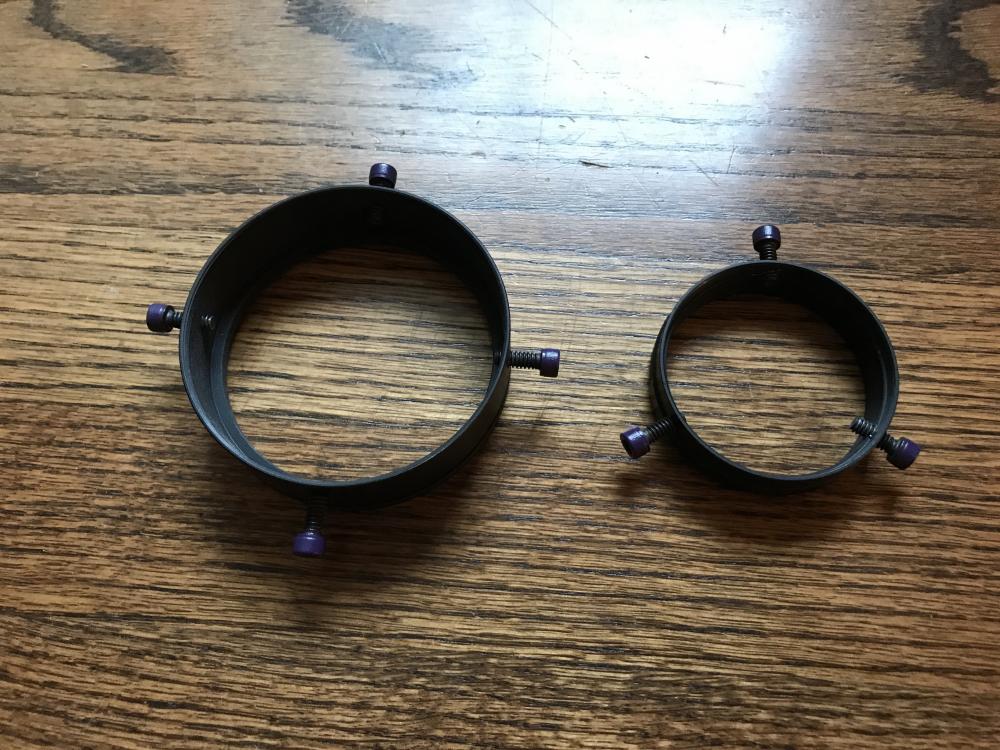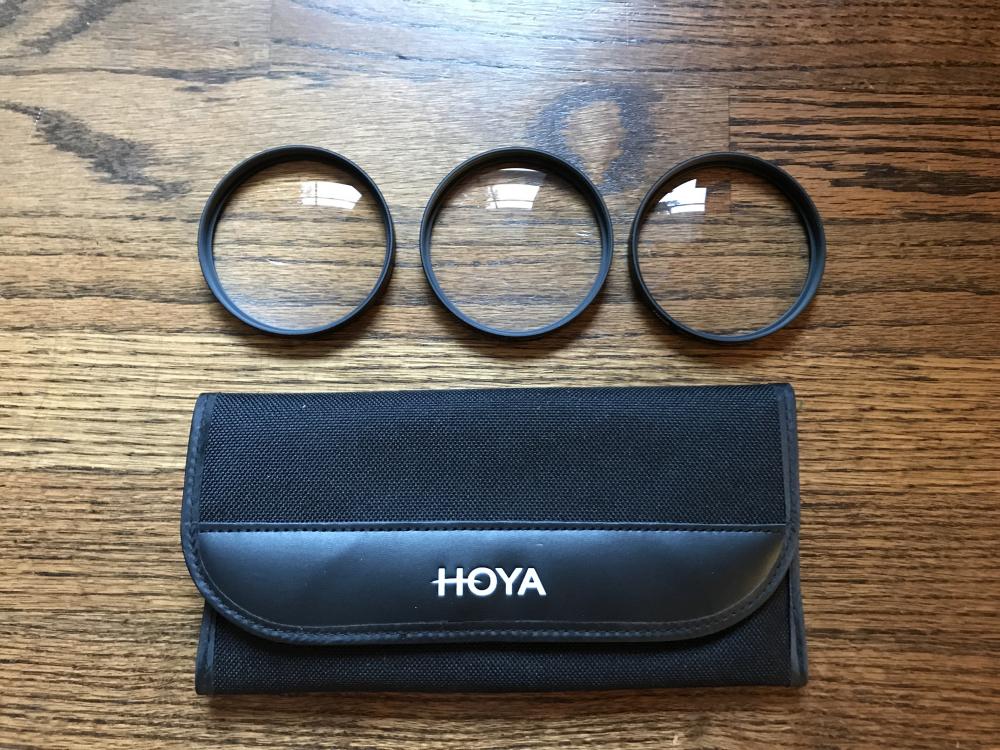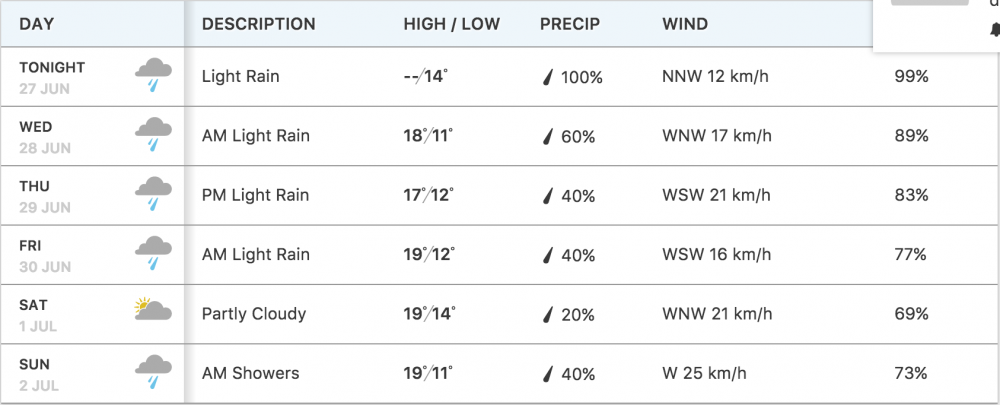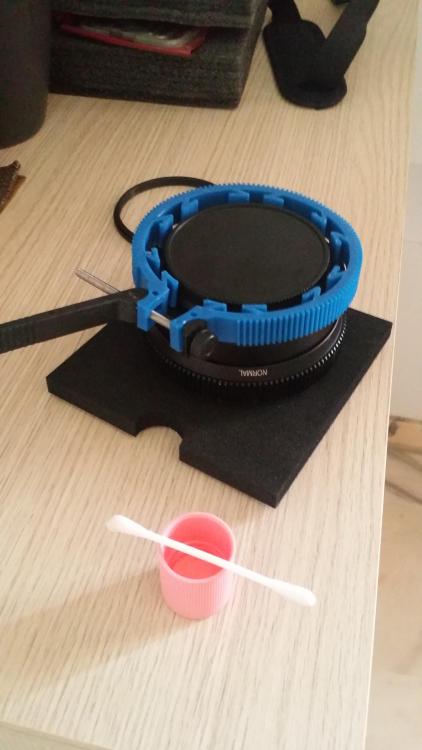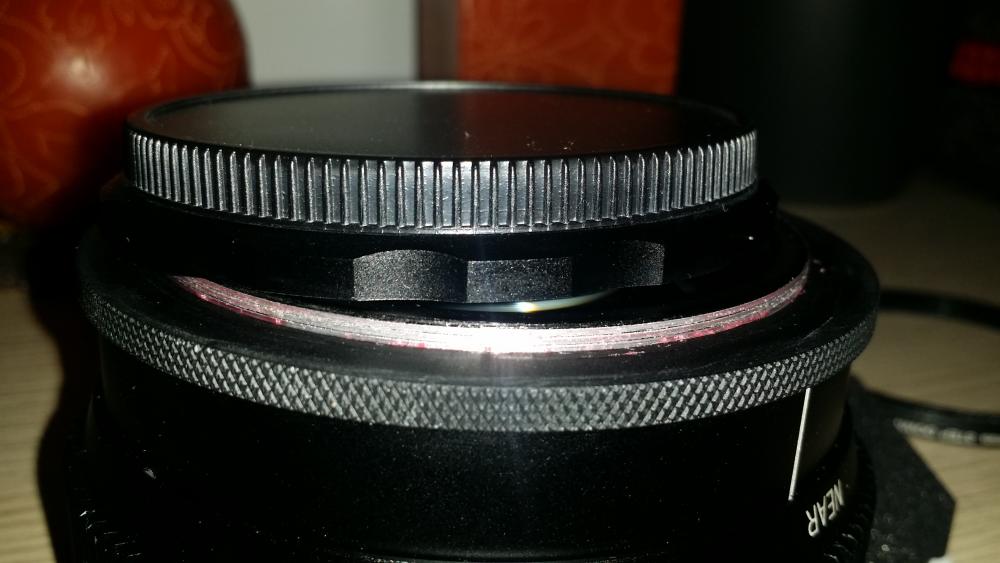Leaderboard
Popular Content
Showing content with the highest reputation on 06/28/2017 in all areas
-
I'm sure this is up there with some of the most impressive single take drone shots I've seen for a while, carried out by a very talented pilot using a micro FPV drone and great use of Reelsteady software. Use of reverse playback and sound design makes it even more impressive... making of...8 points
-
Shot on the GH5 in 3 days. A concept trailer done having a zero budget for our upcoming first feature film. I really like what I can squeeze out of the internal 10 bit V-Log footage. DR, lowlight and colors are really good. Everything was shot with sharpening and nr set to -5 and a Tiffen Black Pro Mist filter applied in front of the lens (12-35mm 2.8 V1, 20mm 1.7, 42.5mm 1.7) to make it smoother. Colorgrading done in Davinci Resolve. Drone shots by the DJI Mavic (the internal sharpening is hideous tbh...).5 points
-
Things I've Learned of Recent for the Camera
EthanAlexander and 4 others reacted to Ed_David for a topic
1. Trust your own opinions. Don't follow what someone likes, even if they are a big shot DP. Do tests. Use your eyes. 2. Don't be lazy. Being lazy is the worst. Get low on the floor. Move that light higher or try something different. 3. Be prepared. Be organized and think before the shoot as much as you can. Make diagrams and lists. 4. Do not overlight. Trust yourself in the moment. Step away from the monitor then come back. 5. Bounce the light. Try that first, then direct. 6. Use a capture device like the odyssey 7q and then take screengrabs and you can compare your lighting and blocking. 7. Communicate as much as you can with your crew ahead of time of how you work.5 points -
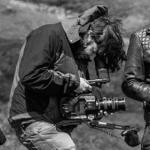
Things I've Learned of Recent for the Camera
EthanAlexander and 2 others reacted to Oliver Daniel for a topic
1. Think about the light before anything else. 2. Change that lens, it may look way better on different glass. 3. When the talent is in thought, or simply just waiting for a direction, roll the camera without their knowledge. You can get some really useful, very natural moments. 4. Don't do the shot once. You may pull off the technique better on repeat. 5. Bring 634 lens cloths to a shoot, because you will lose 633 of them. 6. Never settle on a grade straight away. Look at it again tomorrow. Those skin tones might be green and you had no idea. 7. If you're not sure if it's right, it's definitely not. Trust yourself. It's got to feel right, always. 8. Adjust the light again. It will look better. 9. Eye lights. Make the effort. 10. Buy a RED cam. Send it back. Read EOSHD and get confused. Get a GH5.3 points -
Great video deezid! This video is so good in so many ways that is surprising that the first thing that cross the mind of some ppl is that "the blacks are crushed". If thats the first thing that someone wants to say about this video its says more about "you" than the maker (or the piece). Even if i think that the blacks should be "less crushed" (wich i also do, but thats not the point) thats the last thing i think after i saw i video like this. But hey....thats me.3 points
-

Pro camcorders? They're pointless creatively.
zetty and one other reacted to Andrew Reid for a topic
Work tools are boring. I've always found mirrorless cameras way more fun to actually shoot with. In his day job John Brawley has an Alexa. Why on earth would he shoot 'for fun' creatively, with an Olympus E-M1 II? But he does. There are a lot of talented DPs who shoot with DSLRs and mirrorless cameras once they down their RED and Arri cameras at the end of the day. Yet I find in the mid-range market for video pros (wedding videographers for example) there's an aspirational value attached to the higher-end pro cameras, that is stupid and pointless. Aspirations should be creative. Owning a Sony FS5 or Canon C500 doesn't make you more creative, it makes you more efficient at work by a slight bit, and you appear more professional because of the big nobs and bells & whistles. Sadly, it doesn't necessarily make for "better" work because I have yet to see a clear distinction between work shot on mirrorless cameras and on stuff like the C300. In fact often the small camera stuff looks better and more inspired. The legendary Anthony Dod Mantle is known for his rough and ready work with digital, but when he went Canon C-series on Oliver Stone's recent series of Putin interviews, the look they achieved was slap dash and lazy to my eye... Could have been so much better. He used DSLRs as well on this shoot (between 2015-2017) and those shots actually came out more interesting! Too many pro videographers seem to dream of cameras like an Alexa and RED, why shows to me how important the professional label and look is to people, but creatively, they are no better and actually worse than the small cameras. I hated shooting with my Sony FS5. A fiddly pain in the ass, for my music video work in Berlin, it needed an OIS lens and rig for handheld - limiting the choice of looks from the lens. With a GH5 you can put any lens on there and it is instantly stable for handheld work, with a tiny form factor that gets out of the way. The FS5's image was worse than an A7S II but double the price. Aside from high frame rates it didn't offer anything creatively over a DSLR or mirrorless camera and now I have 120fps full frame on two of my small cameras along with 240fps 1080p on the pocket RX100 IV - So why bother getting a more expensive camera if it doesn't power you along creatively as much as the cheaper stuff!? These pro cameras aren't cheap... Sometimes I got lucky and I bought a Canon C500 for a very good price used, but do you know how many times I have felt compelled to take it out and use it for artistic work? Zero times. Kendy Ty is another example of a pro who downs his workhorse RED and shoots with a DSLR... The camera gets out of the way to such an extent he can shoot short films in public and direct the actors at the same time as being the main cinematographer. His work sticks in the mind as some of the most creative and spontaneous I've seen and there's not a C200 in sight... zero need for one! I think pros have by-and-large completely forgotten and lost the spirit of the DSLR movement back from 2010-2012 as they sought efficiency. XLRs, built in NDs, yadda yadda. Blackmagic as well, when they ditched the small cameras and went all-out URSA on us. Canon too... Oh wait, they never got it in the first place, and they invented it! Cameras should not just be about making money. That's how an art-form gets boring. That's how it dies. They are not just about doing a job. They're about creatively enabling artists and they're about democratising the art form so that price doesn't act as a road block to new talent. Of course Canon only care about profit, they are not interested in that. The Olympus E-M1 II's stabilisation isn't seen on any of the pro cinema cameras. It's unique. It offers something creatively to the result that a bigger, more complex shooting rig simply does not. On the audio side, so important creatively, small mirrorless cameras used to have limitations and some still do - but with XLR boxes with phantom power that fit in a hot-shoe, you can't really complain. Audio is not a big limiting factor on the Panasonic GH5. I still know that pros have their professional reasons for going Cinema EOS or Sony FS or RED or even Arri... Workflows, codecs, ergonomics, power, performance, looking-the-part... I'm not denying their reasons for one second, it would be so naive to suggest they drop the workhorse cameras and use a mirrorless camera for paid work. But the creative side of the small cameras is what matters to me and I think it is being overlooked as specs in the $6000-$10,000 pro market hot up. Sure, you can shoot all day on a big battery to a small broadcast ready codec with the C200, very practical... But can you put a 1970's Super 16 lens on there? Can you increase the character of your images by a factor of 10? Does it have an anamorphic mode? Nope. If I ever buy a C200... Shoot me. It's over.2 points -

Recommended c-mount lenses for Canon EOS M
samuel.cabral and one other reacted to Andrew Reid for a topic
So it just dawned on me that you can ape the Digital Bolex raw look for £100 with an EOS M + Magic Lantern. Yes, it's an APS-C sensor, so you'd need to go to about 1536x518 for a 1.8x crop 16:9 to avoid vignetting on 25mm lens. GH2 was 1.8x crop and I've had Super 16mm stuff work fine on it. So has anyone actually tried a bunch of c-mount lenses on the EOS M and has any recommendations? Also for decent adapters? Arriflex S16 adapter also would be handy. And before anybody says "just get a Blackmagic pocket cinema camera", remember the EOS M is £100 used body only and does 18MP stills Way more fun!!2 points -
Actually you can make the GH5 look very cinematic!
Hanriverprod and one other reacted to mercer for a topic
However I will agree the blacks are crushed, but I don't mind crushed blacks every once in a while. And I can understand checking different devices and everything looks good but then when you upload it, it seems off. For instance on my computer, this is the best, most cinematic screen grab. The highlight roll off is perfect, just the right amount of contrast to add that beautiful milky sheen. Beautiful actress. And then when I uploaded it here... Seriously though, I wish there was a basic standard that could be set with all devices to obtain a simple, accurate color and image. I know we can calibrate are screens and use color checkers but then we need to hope the end user won't have their saturation bumped up too much or their contrast too high. It really is frustrating, so I can relate. With that being said, I liked the piece and I do think it looks cinematic and I don't care about the crushed blacks because the story seems interesting and the camera movement and composition is beautifully done. And I am surprised this was done with the GH5 because I haven't been that impressed with it. Don't get me wrong, I have seen some nice stuff from it, but most of the stuff I've seen shot with V-Log in 10bit looks like it could have been shot with a GX85 or G85.2 points -
Man, the word underexposed is a trigger point with you lately. Does your eye start twitching and a monotone voice repeats from your mouth... "Leeming LUT clearly states to overexpose... must overexpose..." LOL. Just joking with you.2 points
-
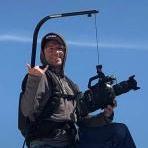
Lenses
TheRenaissanceMan and one other reacted to Geoff CB for a topic
The 40mm is my favorite of the lot, 28mm a close second. Others come close, but the 58mm renders differently. Don't underestimate the 90 3.5 and 20mm 3.5, don't have a large aperture, but they have a ton of separation and great rendering. Best thing about these is you can get all of them for around $500 or less each.2 points -
With regard to audio, I think the innovation has largely come from the music side of the fence rather than the broadcast/film side to be honest. From that point of view, there have been numerous 5DMKii moments. The Portastudio was one, the LinnDrum was another, the Akai S900 sampler, the Atari ST with Cubase, the ADAT digital multitrack, the Yamaha 02R mixing console and of course SoundTools as it was and ProTools as it became. Arguably, these were all much bigger game changers than the 5DMKii, particularly the latter ones as they changed the entire industry at the high end as well as the low. The 5DMKii let you make images that looked somewhat like the movie studios could do, the audio products didn’t just allow you to produce audio that sounded like a real recording studio did but actually became the real recording studios. The nature of broadcast and film is intrinsically more conservative. I’ve been involved in product development for one company where it seemed inconceivable why the BBC, for example, would spend five times more for something that did less and then for another company where it seemed inconceivable to me why they would spend five times more on what we were proposing to them than they could on something similar they could get from a music store. Some days you’re the statue, some days you’re the pigeon ! The problem with audio developments for music is that it plateaued and then became a race to the bottom price wise from which it will never return. It means that the innovation is now in the cost reduction and arguably why not because there really isn’t many more places for it to go in terms of functionality or quality. Which is good for us! As all of this rapid development was going on in music technology, say between 1982-2000, it was like the wild west at times with companies coming from nowhere with bombshell products that either drove their competitors out of business or drove them on to greater heights. And the vast majority of these companies were small ones (generally created by musicians who had to invent what it was the market didn’t have for them to buy), which made them lean and agile. Over time though, the eating each other’s lunch routines often combined with little, no or reckless business practices (and ESPECIALLY poor cash flow from over ambitious product developments) left them vulnerable to being put out of business or, more usually, being bought out by the major manufacturers who were predominantly large Japanese companies. The likes of Oberheim (Yamaha), Linn (Akai), PPG (Korg) and Sequential Circuits (Yamaha again) all went that way and the innovation generally went no further for them once they were under the wing of those bigger manufacturers. Eventually freed from their ‘consultancy’ deals, most have resurfaced as boutique operations serving an ever more niche market. If I look at someone like Fairlight and my relationship with them as an example of what happened to an innovative company, its quite informative. I went from being an awestruck kid when they brought the CMI out, to then working for a manufacturer who basically drove them out of the sampler business they’d created, to eventually working on OEM development with them when they transitioned to broadcast. In the subsequent 20 years they’ve changed hands countless times and are now just a tab on a piece of free(ish) software. Its hard to grasp such a transition for me but for anyone who’s too young to know what the CMI was, its the equivalent of RED’s RAW pipeline ending up as a free download in the Sony PlayMemories store for your RX100. Lexicon are exactly the same. From making jaw dropping almost other worldly products to being gobbled up by a company that was making most of its money off providing car stereos for GM etc and Lexicon was reduced over time to being included in every low end mixing console and software bundle that it could be licensed to. The company that bought them has done the same to every company its bought and I can’t even dignify them by mentioning their name even 20 years after them destroying the company I worked for ! So there’s just no incentive there for anyone to be innovative in music audio anymore as its littered with similar stories and the ones left standing wouldn’t see the amount of volume in broadcast/film that they need to press the button on the mass production runs they now need due to how cheap everything has to be now. The company that COULD do it are the much maligned Behringer. If you look at something like the X Air XR12 digital mixing console and see what they can knock out for £239 retail (inc VAT!!) then it doesn’t take a genius to see what they could do against Sound Devices if they had the inclination but there just isn’t the market there. Because, believe me, they wouldn’t have blinked if there was. So, unfortunately, I don’t think we’re going to get that 5DMarkii moment and the innovation such as it is will come from individuals themselves looking at products from the music side of the fence and modifying it themselves. Like getting that X Air XR12 and powering it from Sony NP batteries to make an extremely capable digital field mixer and recorder for £269 (including the £30 for the bits to do it) or being a smartarse and using cheap midi controllers to create remote focus and control systems for Panasonic cameras for under £75 (ahem!). Because music audio had its numerous 5DMKii moments a few years ago there is a backlog of a ton of cheap stuff that flies under the radar for film makers that is waiting for them if they look for it.2 points
-
If you're using a GH4/G7/GX85/G85, a lot of vintage 1" 12.5mm TV lenses will cover. The faster the aperture, the better the coverage. With the GX85 and IBIS on, I got full coverage with the 20mm Meopta lens.2 points
-

Pro camcorders? They're pointless creatively.
Kisaha and one other reacted to Andrew Reid for a topic
A very nice rig, but the screen is always the weak point for lightweight, well balanced shooting with the Blackmagic Micro Cinema Camera. Why does it need to whacking great big Canon batteries on the back and such a think bezel, when an OLED phone screen (with airplane mode enabled) can last for just as long on the thinnest battery imaginable... And that is with a hefty 8 core CPU humming away in the background. Somebody needs to finally wake up and put a 5" OLED in the same sized body as a phone, but with a Micro HDMI port on the side along with the USB C port for firmware updates and charging. With USB C you could top up the internal screen battery with an external USB one under anywhere on the rig, if you wanted even longer run times. You can't attain lightness and balance with that whacking great articulated screen coming off the left-hand side like, unless your main camera is an URSA!! Also as much as I want to like the Blackmagic Micro... 14bit full frame 5D Mark III raw is definitely in a different league for image quality.2 points -
Fujifilm X-E2S
Chris Oh and one other reacted to Mattias Burling for a topic
Cool, Fuji images definitely have some mojo in them. I hope (know) you will enjoy it. And so far I like the old 16mp sensor more than the new 20-something that sits in my XT2. The even older 12mp is cool as well. But the 56mm I unboxed yesterday gave it new look Hopefully I will get an email today from a fellow interested in swapping his X-Pro2 for my X-T2. Would be a deadly combo with the 56mm. Fingers crossed2 points -

Actually you can make the GH5 look very cinematic!
Fritz Pierre and one other reacted to Orangenz for a topic
I don't understand the story but the difference on grading is night and day. Fantastic work!2 points -

FS: Anamorphic lens, diopters, and clamps
Justin Bacle reacted to AaronChicago for a topic
1 point -
1 point
-
1DC Discontinued
Dave Maze reacted to HockeyFan12 for a topic
Yeah I wouldn't get worked up about it. 7Ds on technocranes were common in tv for quite a while. Granted Deakins I'm guessing would have turned down the 7D but this is more about size and convenience than it is about image quality. But yes, it proves the 1DC is "good enough" for a sweeping wide shot being intercut with the Alexa. Which is pretty good!1 point -
Good test, any chance of a side by side with 80D and eoshd c-log vs 1DC cLog... graded and ungraded. And I wouldn't hate if it is 1080p vs 4K. But I would like to see all-i 1080p from the 80D.1 point
-

Pro camcorders? They're pointless creatively.
mercer reacted to JesseYules for a topic
Usually when people carry on about pro features, it's because they are working operators, who are renting their skills for commercials. They want a big sexy rig that their clients will find impressive, and a wide range of professional features so that they can offer their client lots of "looks". I constantly need to remind myself, that not all advice I read online is directed for me. If you're a working director, with a set style you've developed over the years, you've probably figured out the combination of location, lights and post-production you need to achieve your images. Forums about a new LUTs, extra bit rates, slightly sharper lens are fun to nerd out about, but the reality is, none of the upgrades in specs would affect recognizable directors like Kubrick, Wes Anderson, Spike Jonze, Michel Gondry or David Fincher. You could easily shoot the Godfather on an A7s II.1 point -

1DC Discontinued
Hans Punk reacted to Jordan Palmer Wiens for a topic
I think it's the 1dx taking RAW stills through the miniatures not video, much like a really slow timelapse.1 point -
Things I've Learned of Recent for the Camera
mercer reacted to Fritz Pierre for a topic
I would add, shoot as if you're rolling film, not digital onto a memory card....read a comment somewhere recently about a producer mumbling about digital cameras always rolling on set...it causes confusion....an overload of data and I think creatively causes fatigue...that goes for the entire crew and the talent...but especially for the talent....they peak at the wrong time and mistakes get made by the crew, so you may miss that shot...and you land up shooting the same scene again the next day.1 point -

Max bitrates and does the NX1 hack actually reduce macro blocking?
Marco Tecno reacted to Parker for a topic
I use one of the (apparently now discontinued) Lexar 2000x UHS-ii cards. I generally record 4k at 200 mbps and 60p and 120p at 180mbps. Keep in mind however that I am usually recording with the sound off, using manual focus, and at a low-ish ISO (I mostly shoot weddings so sound is not needed for the type of work I do). It is my understanding however that the higher the ISO or more processor-intensive tasks the camera is performing, such as autofocus, DIS, etc., the more likely you are to have your recording stop at those extra-high bitrates. If I do record sound or use autofocus, I usually do drop the bitrate to 160, just to be safe. As far as conclusive tests of solving macroblocking with the bitrate hack, if I recall, @kidzrevil posted a whole bunch of tests a while back, when the hack was first getting going, that showed off the results, especially in busy scenes with lots of detail and motion, like a fountain. They're probably buried somewhere in that massive original NX1 hack thread.1 point -
Careful with making B camera suggestions. You'll have someone on saying that the only B camera to an Alexa is an Alexa. Or that the Alexa is actually the B camera to the Enormo2567-T Is that a challenge1 point
-
I'll swap my 550D for your RED!1 point
-
1DC Discontinued
andrgl reacted to luizhmgoncalves for a topic
Probably the studio that shot miniature scenes already own the 1D C and had that motion capture rig made arround it. And they do multi passes to capture lights and other effects. Imagine doing that with the 1D C in raw stills. It is just like those guys did with the BMCC:1 point -
Anybody used a Cinelux Projection anamorphic with original taking lens?
Justin Bacle reacted to wallpaperviking for a topic
Fantastic! Thanks a lot....1 point -
1DC Discontinued
Dave Maze reacted to zerocool22 for a topic
Hate to bring the bad news! But Roger said the 1DC was only used for reference shots1 point -

1DC Discontinued
Dave Maze reacted to Andrew Reid for a topic
Blade Runner 2049, shot on the 1D C... That's exactly what I'm talking about in the recent pro camera article, they are all doing it even on mega budget feature films, because small cameras are creatively liberating and don't need babysitting as much when left unattended on some robotic arm. As you can see it has a simple LAN cable connected to it. No whacking great cables coming out the back of a DSLR for a start. Maybe they modified it for remote control. The lens might have AF motors to control focus wirelessly, but it doesn't look like an EF lens that is for sure. Canon were so stupid not to fully exploit and develop the 1D C concept over the last 5 years.1 point -

Samsung NX Speed Booster
Francesco Tasselli reacted to lucabutera for a topic
I am very honored by Andrew's review. Some fast Aps-c lenses could work on NX-L without vignetting. I think the Sigma 30mm 1.4 Art lens could work fine, getting a nearly 35mm 1.4! But I did not test it.1 point -

Actually you can make the GH5 look very cinematic!
Chris Oh reacted to hyalinejim for a topic
Anyone who is unsure about where black levels sit in cinematic images can check out full res movie stills at http://www.blubeaver.ca/ There are even men in suits in there somewhere!1 point -

Pro camcorders? They're pointless creatively.
BTM_Pix reacted to Trek of Joy for a topic
Twenty years ago when I first picked up a guitar I got one of those, could multi-track on a cassette. It was a revelation. Then a few years later I discovered Cool Edit Pro and went completely digital. I gave the Tascam to a friend for free as it was just collecting dust in a closet. Like all my old cameras and the white Les Paul Custom that had aged to a yellowish tint and weighed more than any other LP I've picked up (11 lbs, it was a tone monster) - I wish I had it back. Anyway, small cameras, like small recorders allow you to just hit record and capture something without all the extras and calling the roadies. I got the 5d2 shortly after it was released and I haven't wanted a "traditional" camcorder since. When those were announced, I was absolutely going to get one. Sad they never saw the light of day, entry cameras start you on a path to upgrade-itis that is never cured.1 point -
1 point
-
The 1DC produces a gorgeous image to rival any digital cinema camera. No doubt about it. You guys are lucky to have that camera! As for 10 bit, I don't think it would have been possible to do 4K 10 bit intraframe in a completely weather-sealed body as the 1D. There would be way too much heat generation. Unless, what you mean is that you prefer a 10 bit highly-compressed codec to MJPEG. The processing power was simply not there for such compression and Canon had not developed any internal 10 bit 4K codecs before the C300 II.1 point
-
I'm with Andrew! I will forever keep my 1DC as it has now become a true god-like, extinct fossil. I'm STILL impressed with the IQ from this thing and it blows my mind that it doesn't get the credit it deserves. Put it next to any modern cinema camera today and I'm sure you'd be impressed with the performance of it. Roger Deakins had been spotted using it in the new "Blade Runner" movie, and they have an unlimited budget! Why would they choose such an older, cheaper camera unless it had something special about it? Now is a better time than ever to pick up a used 1DC. It'll go down in history, along with the Digital Bolex, as a truly special, one of a kind camera.1 point
-
Without knowing the technology behind RAW light (wavelets like JPEG2000, REDCODE?) it is hard to judge the computational power needed, but I think the chip are powerful enough for 4k 10bit 422 at least at 30fps. My opinion, as many others, is that it is only a temporary protection of the C300 II and once they are ok with releasing the firmware they can implement 10bit 422 400 Mbits and/or 8bit 422 300 Mbits. Maybe one factor would be to be able to save to the SD card so the 300 Mbits will be chosen. Although it is possible to do 400 Mbits on SDs, with so many cards brand and models it can become tricky for support and test. I'm skeptical to the 8bit 420 because it make no sense, they already have 8bit 420 so 6 months wait just for going all-I? but again is Canon.... Another theory would be that they need more time to finalize/optimize the XF-AVC for 4k 60p although the C700 does this already but at 810 Mbits so no SD card.....1 point
-

Fujifilm X-E2S
Mattias Burling reacted to Tim Sewell for a topic
1 point -
Pro camcorders? They're pointless creatively.
webrunner5 reacted to AlexTardif for a topic
I'm a total amateur when it comes to video, at least comparatively speaking. That said... learning my way around the craft while shooting with A7Rii/A7Sii over the past two years has been fun but also often super annoying for all the reasons known to you guys (battery, ergonomics, controls, codec, etc.). Any combination of those issues were adding up to frustrations that were taking a toll on the creative process. I figured I'd try a more video oriented body so I rented FS5. After messing around for a week with it I bought one. Recent price drop to $4,750 helped. The only thing I miss from the A7xx bodies is... IBIS. That's it. Everything else is on another level and it's just so much more fun to shoot with. Everything just fits and works nicely together, I can just forget about fiddling with the camera and focus on the subject I'm shooting. And it's small... sure not as small as A7xx, but unless you build it up (just like you can frankenstine any A7xx) it's a very compact package. So, while I appreciate the A7Sii for its see-in-pitch-black capabilities and will continue to use it at night, I've retired A7Rii to it's stills-only duty and FS5 as the primary shooter. To each their own1 point -

Samsung NX Speed Booster
noplz reacted to Andrew Reid for a topic
NX-L is a 1.08x crop over full frame, which is nothing. APS-C is 1.5x crop! On the NX500, that had a 2.3x-ish crop in 4K, so with the NX-L that turns into a 1.6x crop, which would be fine with the Sigma 18-35mm F1.8. Come to think of it, that's a pretty nice combination1 point -
Might I say that this doesn't just apply to cameras, but lighting and rigging as well. For the love of god, please please give me more products like the apurture 300d. No more generators or 800lb lights that risk burning down the city. Small, portable, and powerful.1 point
-

'Convert' your 72mm SLR Magic Rangefinder into 77mm
Tito Ferradans reacted to Grimor for a topic
1 point -

Samsung NX Speed Booster
noplz reacted to Andrew Reid for a topic
1 point -
GH5 and Voigtlander Nokton.1 point
-
I've seen a lot for this price in AUS (less sometimes), no one seems to want them anymore. 48fps is about 15seconds??? (if I remember rightly? but I'm not sure), but it's something closer to a cinema wide screen aspect, not 16:9. But the quality is good and you could crop back to 16:9 if needed. I don't use it much though as I don't use slomo much. Here I found the original page (member N/A) - https://www.magiclantern.fm/forum/index.php?topic=9848.850 ___________________________________________________________ 1728x692 48 fps slow mo. But wait a minute... When I play it back, the footage is normal aspect, no stretching required! I'm kinda running on no sleep in 2 days, I need someone to confirm this ASAP. I noticed when I set the cam to 1280x720 60p, and set the fps override to 23.976 exact fps, the liveview display was stretched vertically, so when recording it and playing it back records it in normal aspect! Timer A under 23.976 exact is 422 (FT -76). So I set the fps to 48, and Timer A back to 422. Mlv settings- 1728x692 3:2 GD Off Canon preview 256 MB warmup SRM On Hacks on 4 buffers Reserve on Global Draw off Expo override on Rokinon 35mm manual cine lens After messing with it a little bit more, the black and white levels get all wacky sometimes and the exposure is super glitchy. At first, I noticed this while testing out different settings in 640x480 mode, going to do some more tests soon as I charge my battery. :edit: Yeah definitely a bug in the fps override control. I just downloaded the latest nightly, same thing. How exactly does fps override cause LV to stretch? Or is this a new feature I completely missed?! :edit2: Ok, just figured out that this bug has been in the nightly since 7d fps override was implemented. :edit3: To fix this issue, Timer A needs to be set to 498 (FT +76) for 23.976 exact and 440 (FT +10) for 60 exact.1 point
-

SONY PMW F3 - "Direct Menu" where is it ?
BenEricson reacted to TheRenaissanceMan for a topic
What do you mean by "frame shutter"? I can set my frame rates and shutter speeds without issue. Also, I finally picked up a blackmagic video assist for my F3! Still need to do some more tests, but @BenEricson is right: beautiful, clean images that are very hard to make fall apart. The Assist has some quirks, like selecting "lines" to get peaking instead of the "peaking" option, but is otherwise well-featured and amazing value for money. Looking forward to shooting some 10-bit on something worth sharing!1 point -

Is 8K too much?
Amro Othman reacted to Hans Punk for a topic
Shooting 8k is not too much. 8k and beyond has/will become more and more necessary for movies that involve heavy visual effects. Being able to work with high resolution plates that have the headroom to allow re-positions and the overall detail boost for blue/green screen work is a huge advantage. When 8k live action is inter-cut with CG characters, the 8k footage (often down-scaled considerably) now matches the resolved detail that CG characters and environments can have (because they do not have to be 'captured' photographically). Traditional techniques of lightly degrading/softening the CG image to match the live action plates is becoming less of a thing when shooting higher resolution 'cleaner' live action elements. 8k is also a no-brainier when it comes to being an attractive acquisition format for archive purposes, it will have a longer shelf life in regards to being compatible with ever-evolving displays and projection systems whenever the 'negative' needs to be revisited. All of the above has a recent real-world example....Guardians of the Galaxy Vol. 2 Back in the day, Vista Vision format was often employed for effects shots that required optical compositing and many passes through the printer would cause generation loss. Once the larger format of Vista Vision optical composite was down-scaled and printed to 35mm, the grain was effectively reduced to a regular size (or smaller) and the generation loss of detail was no longer apparent since the reduction to 35mm was effectively returning full resolution to that smaller format. ILM were the most famous users of this technique and that is why they became the best in the business...providing the best quality optical composites for effects shots in films. Although we no longer have optical compositing generation loss to deal with, shooting larger format at 8k+ still has many of the advantages that these old optical tricks gave. The effect of reduction/downscale alone to a lower resolution gives a massive improvement to perceived sharpness, as well as huge reduction in noise - since any noise artifacts are literally shrunk. I remember when people were asking if upgrading to HD cameras was overkill...how quickly we forget. 4K down-scaled for HD/2K delivery works great, since compression and noise artifacts from footage is visually reduced, So 8k down-scaled to 4/2k projection makes particular sense in this regard. Consumer 4k cameras often have so much in-camera compression applied to get to that resolution, that the image suffers until down-scaled to HD anyway, which is why a solid HD camera with good picture and colour, often trumps a 4k camera, in terms of delivering a pleasing image. So, shooting cat videos in 8k at home might be too much (unless it is really cute) , but there is an increasing need out there for 8 -16k cameras out there for film production that require visual effect integration...last time I checked, that accounts for most Hollywood releases for the past 25-30 years.1 point -
And how about ursa mini 4.6k as a POV camera? I tried it with sigma 8-16 and made this short test1 point
-

Is 8K too much?
Amro Othman reacted to Dan Wake for a topic
in VR il looks that the goal is 32K. 16K per eye AMD wish that apparently http://www.tweaktown.com/news/50820/amd-chasing-16k-per-eye-32k-144hz-above-vr/index.html so 8K is only like the "Hd Ready" of the VR. incredible.1 point -
Didnt want to start a new thread came across this.,.. Looks beautiful... 4k....dat DETAIL... I got to remember to Pick up a NX 60 2.8 Macro when they drop to $501 point
-

Looks like the Fuji X-T20 gets 4K!
TheRenaissanceMan reacted to fuzzynormal for a topic
Don't worry about it. Someone is just misconstruing the adverse lighting/exposure situation for actual camera performance. This is the YouTube world we live in. A beautifully lit scene on a crappy 10 Stop camera can look better than an Alexa in a bad lighting situation... but try explaining why to a beginning enthusiast is always gonna be a challenge.1 point




